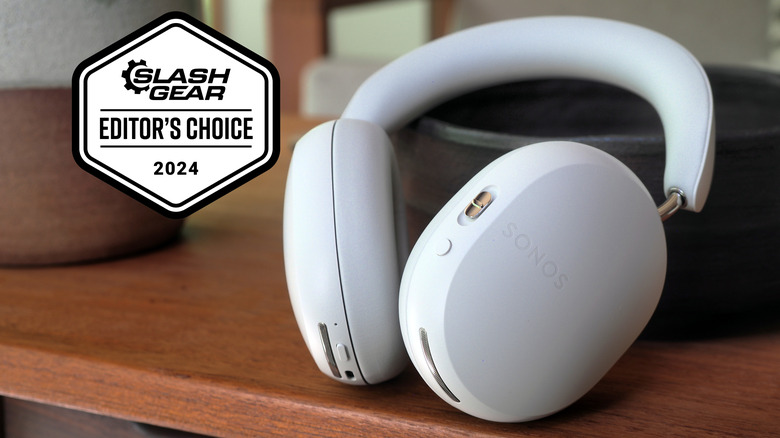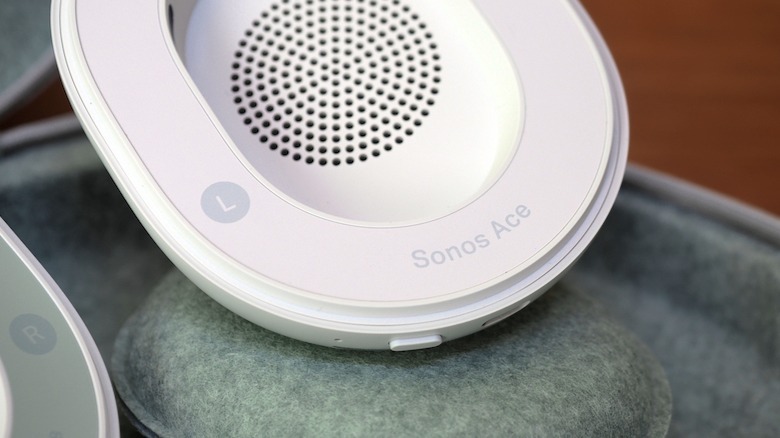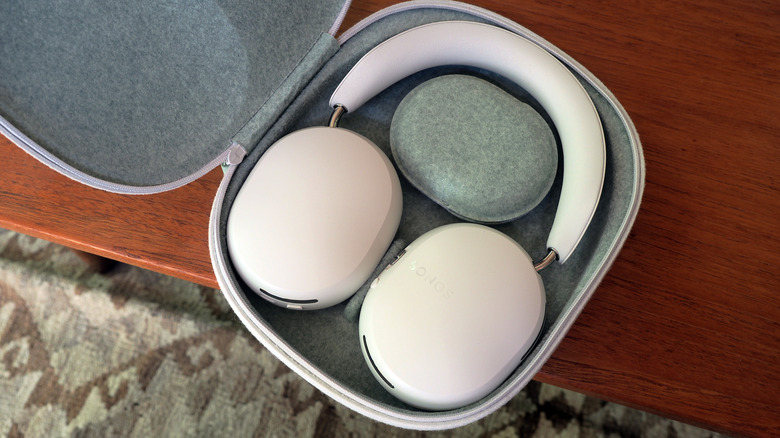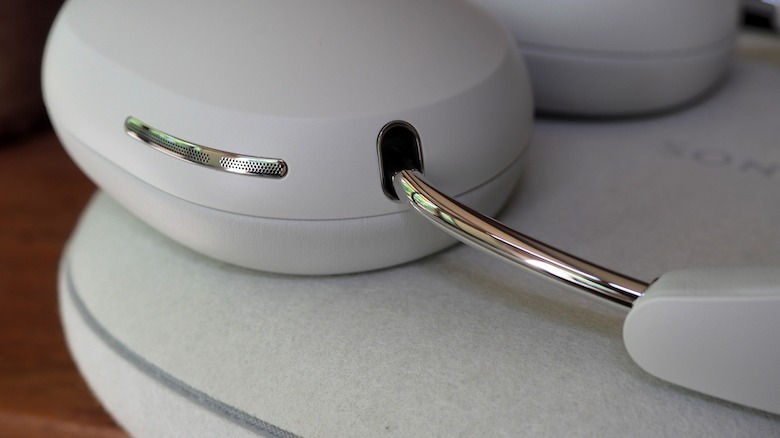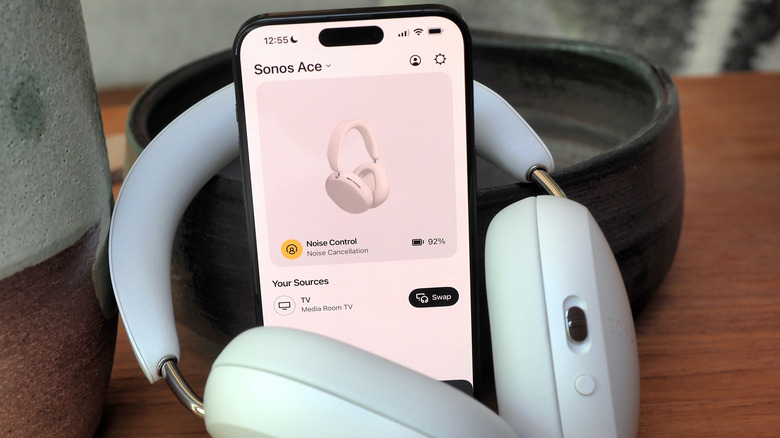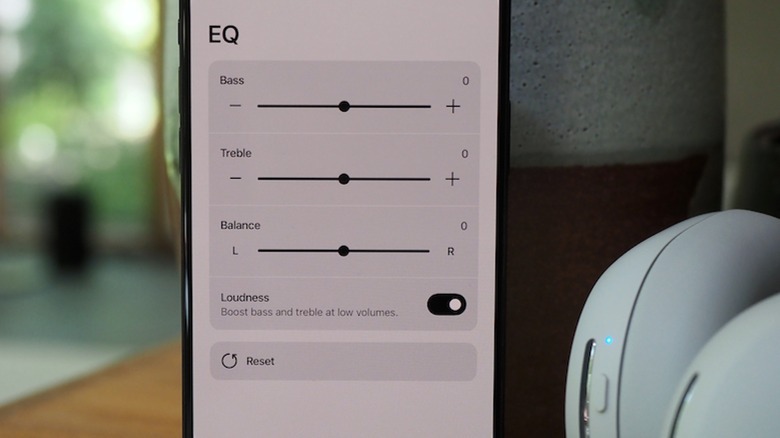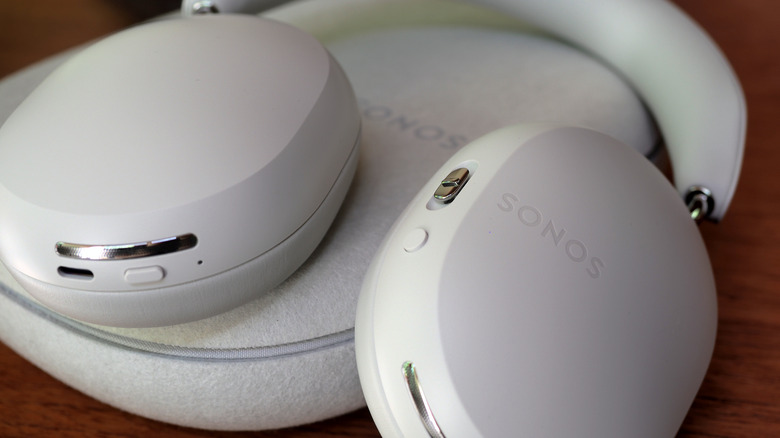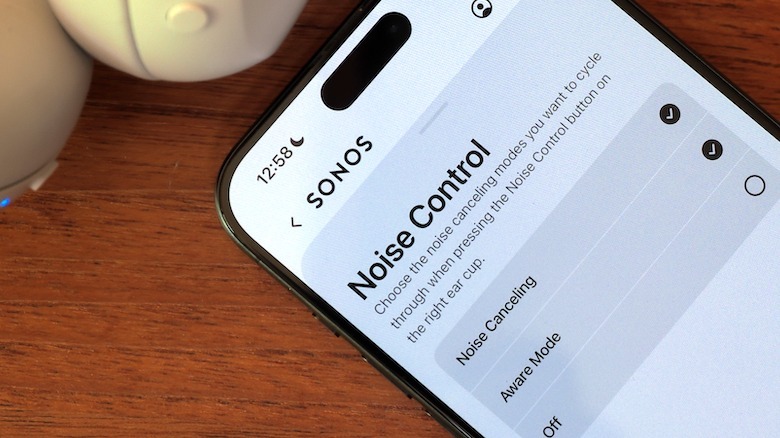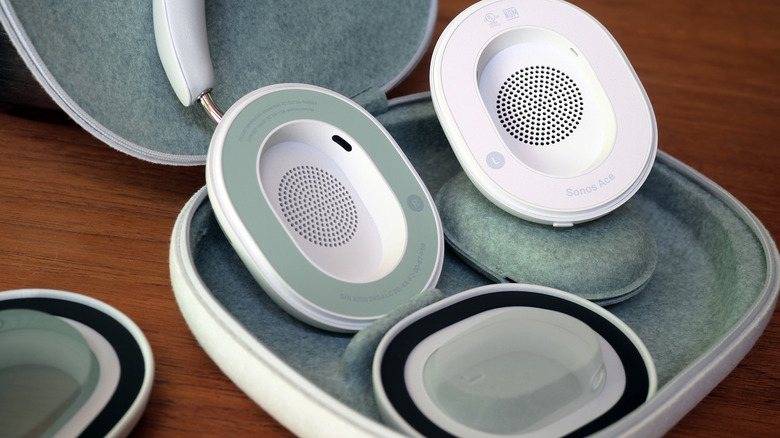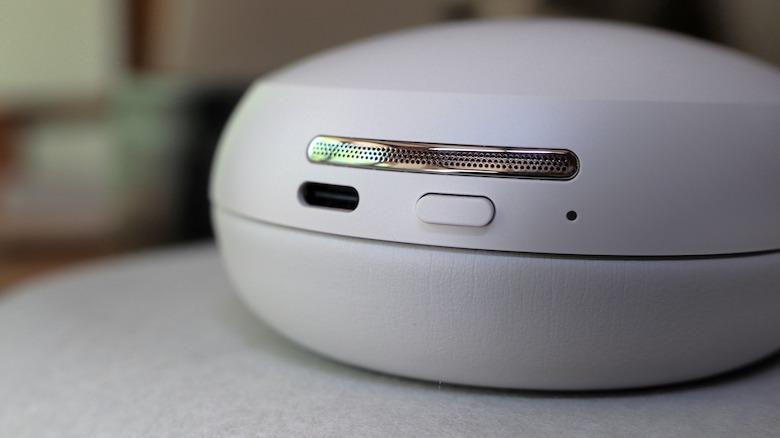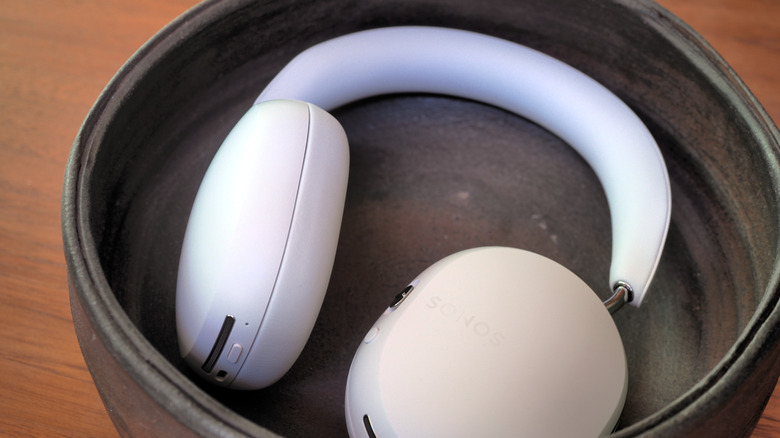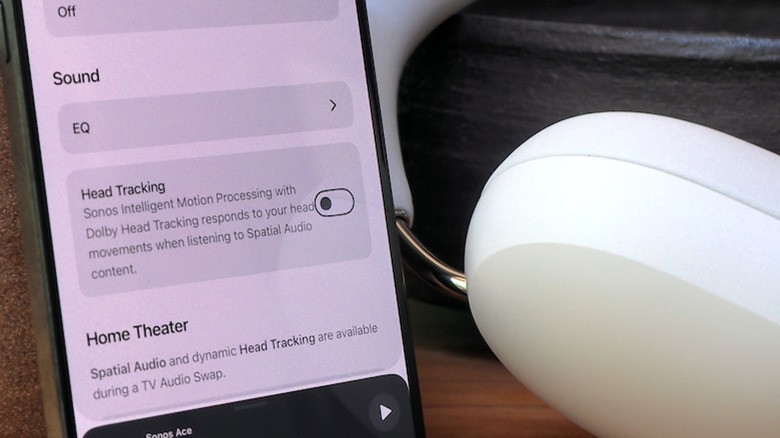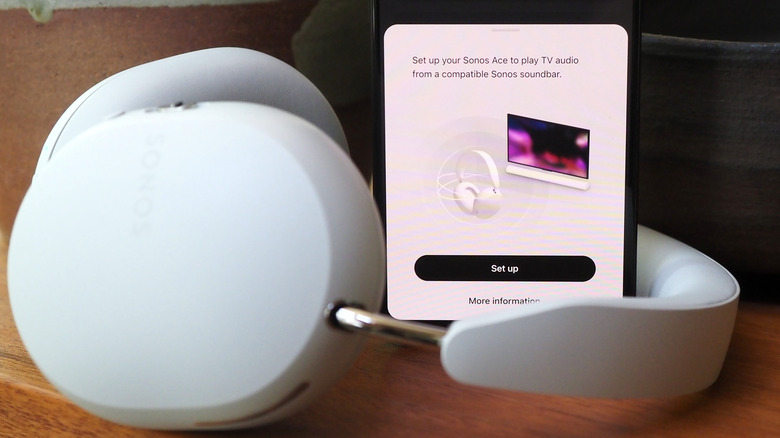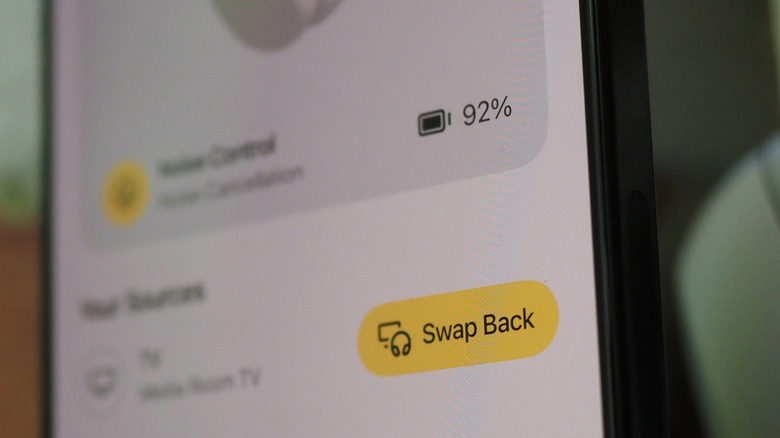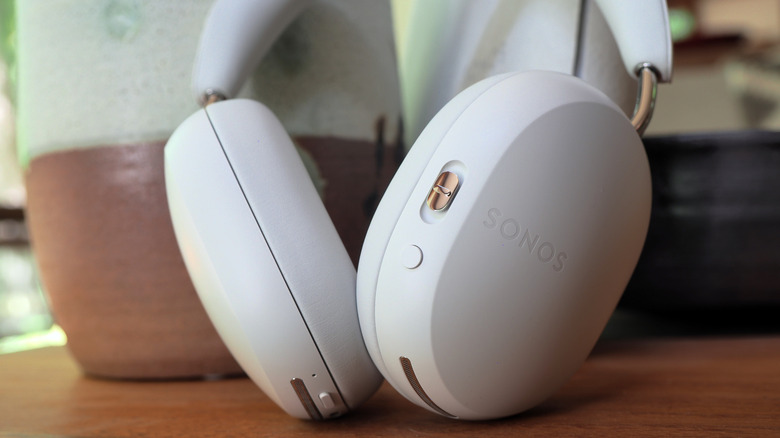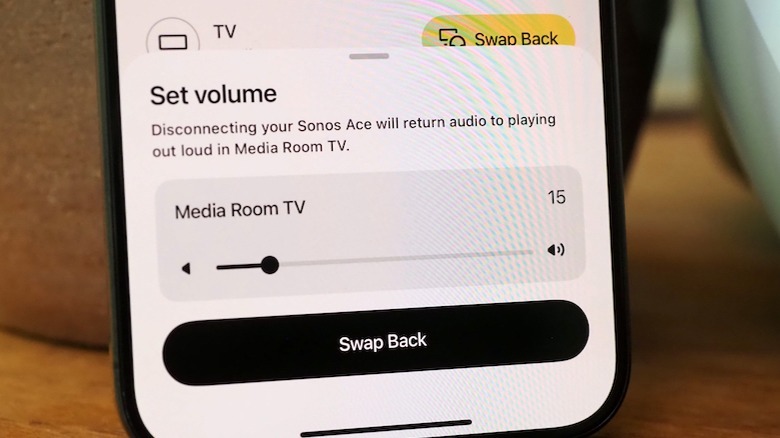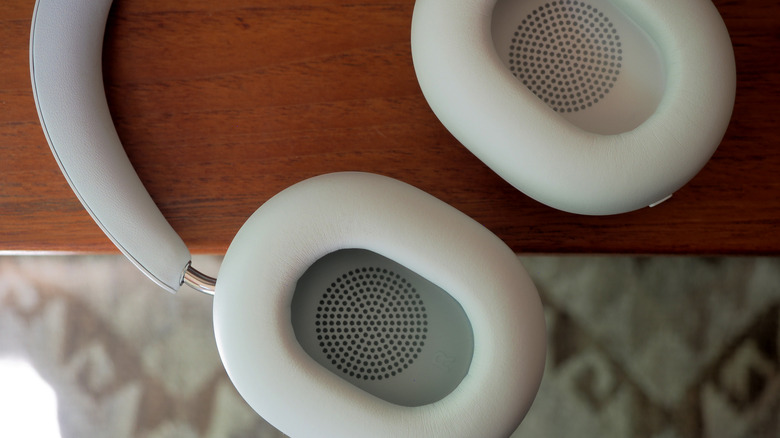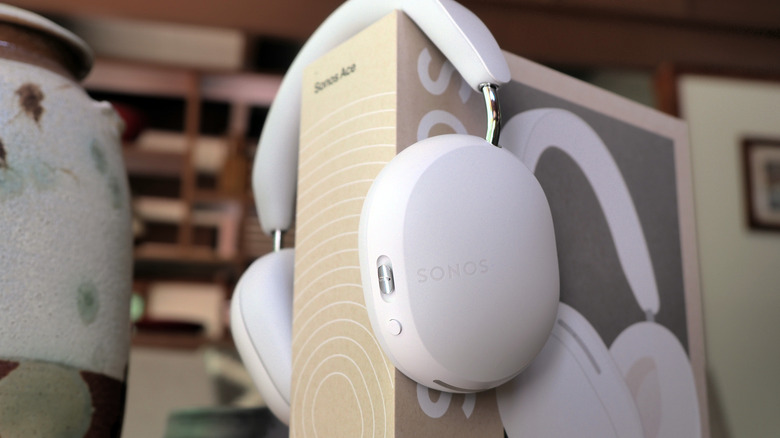Sonos Ace Review: Worth The Price, But Not For The Reason You'd Think
- Excellent audio quality
- ANC is top notch
- Comfortable and easy to use with physical controls
- Soundbar integration is simple and effective
- Expensive
- No waterproof rating
- TV Audio Swap limited to one Ace and one soundbar at launch
Anticipation is a double-edged sword, and the new Sonos Ace headphones have plenty to do in order to justify both their $449 price and the time it took the company to bring them to market. Taking on ANC luminaries like Apple's AirPod Max and Sony's WH-1000XM5, Sonos' first headphones face not only the high expectations of the speaker-maker's existing customers, but breaking into a price-sensitive category already dominated by heavy hitters.
Sonos couldn't simply make a set of active noise-cancelling headphones and call it a day, then. Helping justify the Sonos Ace's premium price tag is its integration with a Sonos home theater system, promising a seamless — and private — cinematic experience that won't wake the rest of the house. Then there's clever spatial audio and head tracking, along with ergonomics and controls which have clearly learned from (and, in many ways, exceeded) the day-to-day experience with Sonos Ace's rivals.
In short, it's the Sonos mission statement of performance with elegance, that just so happens to be worn on your head. As high hopes meet high fidelity, is Sonos Ace ambitious enough to carve out a space of its own?
Simple design but effective
Sonos' design for Ace is deceptively simple. Offered in matte black or white, the 312 gram headphones are predominantly plastic — which feels, unsurprisingly, just like the plastic the company uses for its speakers — though with stainless steel for the hinges and headband arms, along with accenting the various microphone meshes. Those arms smoothly and silently adjust, while the hidden hinges inside the ear cups keep them well sealed to your ears.
Aiding there is the memory foam, which Sonos says it developed itself, and which features on the inside edge of the headband and on the removable, magnetically-attached ear cushions. The result — though subjective — is exceptionally comfortable, spreading the weight nicely for extended wear, and feeling stable without clamping to your head like a vise. Sonos will sell replacement ear cushions at $49 a set.
Rather than touch-sensitive controls, Sonos has used physical buttons. There's a power key on the left side that, when long-pressed, launches Bluetooth pairing; the right gets a button to cycle through the ANC modes or, if long-pressed, summon your phone's virtual assistant like Siri. Finally, and most shiny, is Sonos' Content Key that toggles play/pause when pressed (or answers/ends phone calls), slides up and down to adjust volume, and swaps audio with a Sonos soundbar when long-pressed.
You're going to need the Sonos app
There's something to be said for buttons that are easily located by touch alone, and don't require finicky taps and swipes, while Sonos also went to the effort of making its controls soft-touch and nicely damped. It's a noticeable — and premium-feeling — change from the clickier hardware buttons on rival headphones. Sensors inside the ear cups power head-detection, automatically pausing playback when you take Sonos Ace off.
A USB-C port handles both charging duties and — with either the USB-C or 3.5mm cables that Sonos provides — audio from a connected device. Depending on that device (and of course the source file) Sonos Ace can play lossless tracks. If you've got an Android phone using Qualcomm's recent Snapdragon Sound AptX for Lossless chipset, there's support for lossless audio over Bluetooth 5.4, too (though this wasn't available for testing).
Bluetooth Multipoint support means simultaneous connections with two devices, with Ace automatically switching between them. You'll need to switch it on in the Sonos app first, though, which is also where you can toggle wear detection, delete paired Bluetooth devices, and adjust EQ (including bass, treble, balance, and loudness).
Excellent active noise cancellation
My current go-to ANC headphones get their most use when I'm traveling. The grand days of flight may be behind us, but a bubble of relative isolation does make short- and long-haul trips far easier to stomach. Plus, the relatively steady background drone of jet engines is an obvious candidate for active noise-cancellation systems to hold at bay.
With that sort of repetitive noise, Sonos Ace delivered the goods. Challenged with more unpredictable sounds, like speech and a TV playing in the next room, Sonos' headphones out-ousted the distracting hubbub compared to Sony's excellent WH-1000XM5.
Press the ANC button and you can toggle to Sonos' Aware mode, which brings ambient sound into the headphones. It's useful if you're trying to navigate city streets without getting run down, though — unlike Sony — Sonos' app doesn't offer a way to tweak just how much environmental noise makes it through. What you can do is choose whether the ANC button also cycles through switching noise cancellation off.
They don't fold, but they do last a long time
Sonos' decision to not equip its headphones with a hinge that allows the ear cups to fold in prompted some annoyance from frequent travelers, myself included. The argument in favor is that an extra set of hinges would only shift the headphones' bulk — they might be shorter, but they'd be thicker — thus no easier to transport. That's fair, though presumes you're going to stow your headphones in the supplied carry case before you drop them in your bag.
If, like I do with the Sony WH-1000XM4 headphones which are my usual travel companion, you drop them caseless into said-bag (relying on the orientation of the collapsed bundle to stop other objects from piercing the inner ear cup mesh) then it's less clear-cut.
Battery life is up to 30 hours of listening with ANC or Aware mode active, or up to 24 hours of calls. A full recharge from 0% can take three hours, Sonos says, though three minutes is enough to give a completely flat set of headphones the juice for three hours of music playback.
Sounds like a Sonos speaker
If you've heard Sonos' recent speakers, the sound characteristics of the company's first headphones will come as little surprise. Even without spatial audio switched on, there's definitely the sense that the engineers responsible for tuning models like the Era 100 and Era 300 had a hand in how Sonos Ace sound. Most notably there's a transparency and balance to the overall EQ profile, rather than any one particular area of treble, mids, or bass being emphasized.
For those who enjoy an almighty thump at the low-end — flattering genres like dubstep or reggaeton — Sonos' bass might lack the emphatic slam that they're searching for. That's not to say Sonos Ace are weaklings, just that there was fun to be had in nudging up the bass EQ for tracks like Bad Bunny's "Yo Perreo Sola." At the other extreme, Empara Mi's haunting vocals in "Alibi (3 A.M.)" came through with piercing clarity, crisp and with a sense of near-ominous proximity.
Skipping forward, the frenetic piano of Ethan Bortnick's "hide n seek" thrummed with racetrack urgency, proving the Ace's midrange is no muddy slowpoke. Sonos' homegrown "Intelligent Motion Processing with Dolby Head Tracking" adjusts the balance of spatial audio playback when you turn in relation to the source device, though I found I preferred it with some tracks more than others. Unfortunately there's no way to toggle it from the headphones, forcing another dip into the settings pages of the Sonos app (and, on occasion, following a force reset of said-app to make the decidedly-connected Ace actually show up as active and in use).
TV Audio Swap is where the Sonos magic emerges
Headphones have been, Sonos execs point out, the most-requested product from the company's users. With it seeming a matter of "when" not "if" they'd launch, the question became one of how Sonos might integrate personal audio into its broader, multi-room ecosystem. After all, we've seen it take different approaches there: From the one-touch music swap system as a Roam Bluetooth speaker enters or leaves a Sonos speaker group, to the effectively disparate (and seemingly short-lived) in-car audio collaboration with Audi.
Sonos Ace makes no attempt to join a speaker zone, instead preferring to take over the audio completely. Long-press the Content Key and what's playing on a nearby Sonos soundbar — initially Sonos Arc, but with broader compatibility in the near pipeline — will be piped over a dedicated 5GHz WiFi stream, directly to the headphones. No more squeezing the volume down to near-inaudible levels, just to avoid waking the rest of the family or infuriating your neighbors.
On the one hand, long-time Sonos users — of which I'm one — might feel underwhelmed by that. After all, TVs and home theater systems that can link to wireless headphones aren't uncommon, and you can get a set of basic Bluetooth headphones for a lot less than the Sonos Ace's $449 price tag (plus the cost of a Sonos soundbar on top).
The soundbar swap is seamless
None are quite as convenient to actually use, though, as Sonos' approach. The company made its name by doing complicated stuff — like synchronizing the audio across multiple speakers — while making it all look easy, and Ace's integration with Arc has that same polish. Hold down the Content Key for a few seconds and suddenly the TV's audio is coming through your headphones. Hold the button down again, and it swaps back. There's no pause, no volume weirdness, and no sync interruption with what's on-screen.
There are, beyond the initial sole compatibility with Arc, some limitations. Biggest is that, currently, only one set of headphones can be used: Forget about parents both watching a movie with their own set, while the kids sleep blissfully undisturbed upstairs. There's also no way to control Ace's TV Audio Swap from the soundbar itself, only from the headphones or in the Sonos app, and for now you'll need an iOS device for the initial setup (though not to use TV Audio Swap after that; Sonos says Android setup support is coming). Ace relies on proximity and some other smarts — like which soundbars are currently active — to figure out which you want to grab the audio from; with only one Arc on hand, I couldn't test how well that works.
Sonos may call it TV Audio Swap, but anything routed into the soundbar — whether from a laptop, a games console, or another source — works just the same. If you're streaming music (such as from Spotify or Apple Music) to the soundbar through Sonos' app, though, that won't switch over to Arc. Instead, pressing the Content Key will switch the soundbar back into TV HDMI mode.
TrueCinema is still to come
Here, as with music playback, there's spatial audio and head tracking support, and I'd argue they make far more sense in a home theater environment. The complexities of how it's all processed and delivered take place on the soundbar itself — and it'll upscale even stereo sound to 7.1.4 — but the net result was that movies sounded as immersive as they usually did through my test Arc + Sonos Architectural system. You can selectively turn off both spatial audio and head tracking in the Sonos app — and the headphones will temporarily pause the latter if they spot you're moving around, such as to raid the kitchen for more popcorn — but for the most part I preferred to leave them on.
It works, because while we think of ourselves as glued to the big screen, in fact there are plenty of distractions (like phones, snacks, and demanding felines) which drag our attention away. Spatial audio and head tracking effectively locks the virtual speakers Sonos fills its headphone "room" with in their correct positions, better mimicking the experience of using a traditional surround sound system.
Unavailable for testing, but on the roadmap for later in 2024, is Sonos TrueCinema. That, like how its Trueplay speakers can finesse their EQ according to the acoustic properties of the room, promises to build a custom model of the space your soundbar is in. That will then be used with any Ace headphones that subsequently TV Audio Swap with it, with the promise being that it'll better represent your actual room. Since you'll be able to toggle TrueCinema on and off, I'm looking forward to seeing what difference it makes later in the year.
What comes next will depend on vocal Sonos fans
Down the line, there's plenty of scope for Sonos to broaden Ace's capabilities with software updates. Compatibility with the Beam, Beam Gen 2, and Ray soundbars will be the most obvious improvement: not everyone has the budget, nor the room requirements, for an $899 Arc. Then there's TreuCinema, and the ability for more than one person to connect to a soundbar simultaneously.
Even with updates, Ace won't be perfect. Sonos' headphones aren't waterproof, they can't do sound swapping with the company's music speakers (though nothing is being counted out in future, headphone chief Chris Kallai has promised me), and they can't stream music over WiFi. The latter is by design, Sonos counters, since people already know what to expect from Bluetooth headphones, and might get confused if their playback stopped when they wandered out of WiFi range.
I started out testing Sonos' headphones with the mindset that it would be the soundbar integration delivering the "secret sauce" that made up for Ace's tardy arrival to the ANC party. After all, there's no shortage of headphones promising swell music playback and isolation from the real world. Instead, though TV Audio Swap is clever, it's the overall Ace package which stands out as a winning combination.
Sonos Ace Verdict
It's tough to pin that success down to just one factor. There's the comfort and the construction, and the way the low-profile ear cups combine with the plumptious foam to leave Ace eminently wearable for extended periods. And there are near-intangible but nonetheless special things, like the press-action of the physical buttons, and the glossily machined smoothness of the stainless steel arms.
For Sonos fans, it may well be how much the company's first headphones sound like its speakers. Ace might not be capable of joining a Sonos speaker group, but that continuity of tone leaves the headphones feeing like an honorary member, at the very least.
$449 isn't cheap, and in many ways Sonos Ace does feel like the first-generation product that it is. Yet where rivals seem like, well, headphones that do what they say on the box and no more, no less, Sonos' promise — still to be delivered on — is that Ace will justify their boastful name all the more twelve months from now. Those already in the company's ecosystem will undoubtedly be the earliest adopters, here, but even those without a soundbar should give Sonos Ace an audition for its musical and ANC performance alone.
You can order Sonos Ace in the in the Sonos Store for $449 now.
